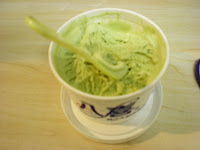For those readers who didn’t know, Dynastea is actually coming to you from a great tea-hub of the world! At least, for now. This summer I’ve been interning at Tsinghua University in Beijing and, as you might guess, it’s practically impossible to spend such a lengthy amount of time in China
Most people seem to distinguish teas by color—a concept thought to originate from the British. According to this system, black teas are simply the ones that turn the water a dark color, green teas turn it green, and so on for red and white teas. This method of classification, while intuitive and sometimes accurately descriptive, is rather misleading; there are plenty of teas that turn your water “in between” colors, and how can one really distinguish between a dark brown and a black anyway? The correct distinction between types of tea is by the processing of the tea leaves themselves. To lump all black teas together would be sort of a crime (and the same goes for green teas), but I’ll do it here for the sake of comparison. Black teas are oxidized or baked fully, leading to the break down of their chlorophyll, while green teas have much of their chlorophyll content left during processing, though the leaves are still usually dried. This lack of fermentation leads to a much leafier taste, and one that can last through a surprising number of brewings. Unlike black tea, a few leaves of this stuff can go a long way at the right temperature of water.
 |
| Green tea popsicle with a red bean filling. |
 |
| Green tea ice cream. Straight up. |
What has particularly appealed to me about green tea here in the Central Kingdom China

No comments:
Post a Comment